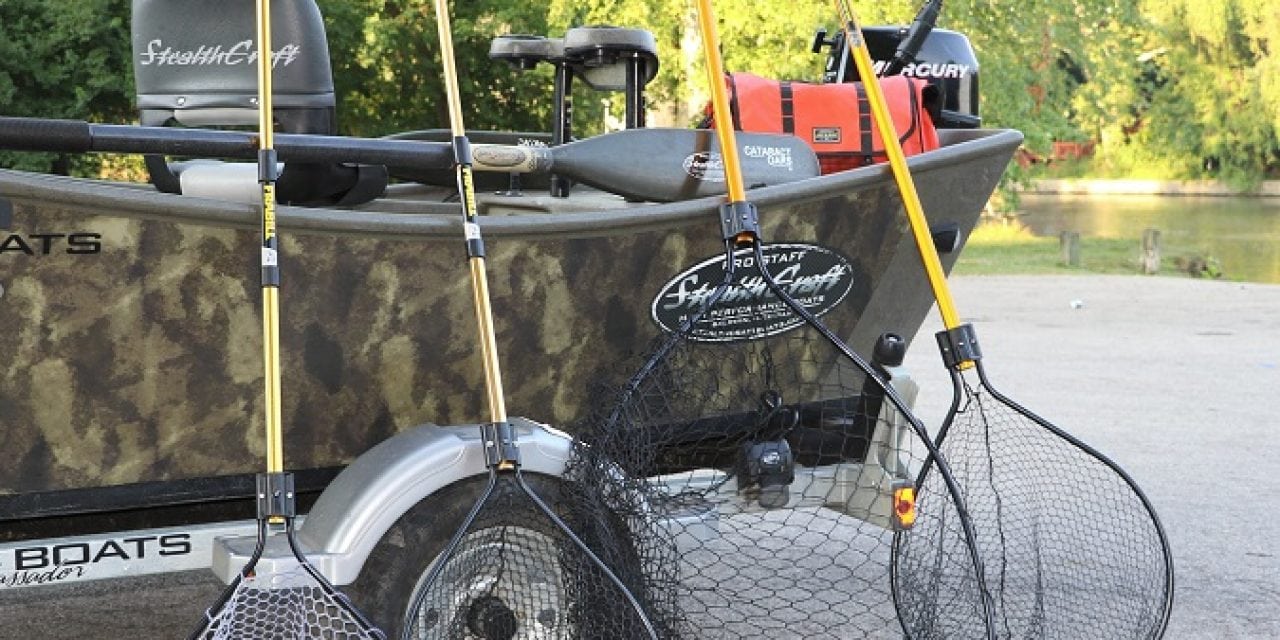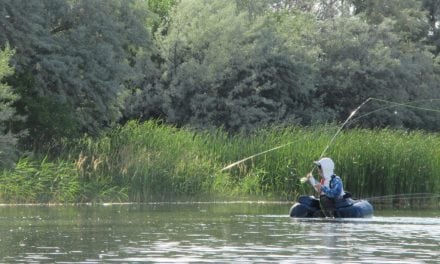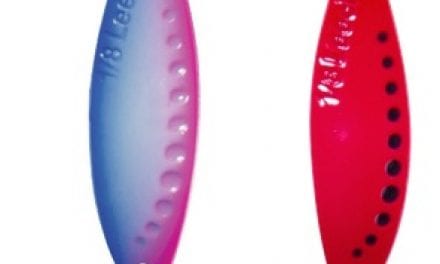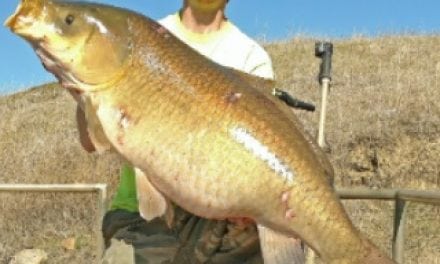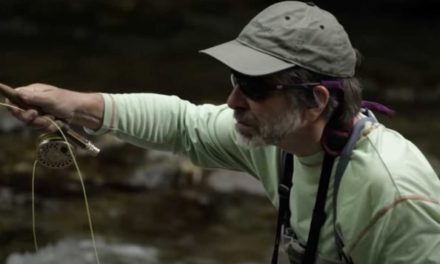Spinning gear or Casting gear? Live bait or artificial? Walk a stream bank or launch a boat in a lake? These are common considerations before venturing out fishing for the day. One decision many fishermen tend to take for granted is net selection. This lack of forethought often leads to frustration as cheapo landing nets regularly fail when hoops break, net bags tear and handles bend. Murphy’s Law states the big letdown will more than likely occur when that once-in-a-lifetime fish is hooked. The best way to avoid such misfortune is to get serious about what net you bring along.
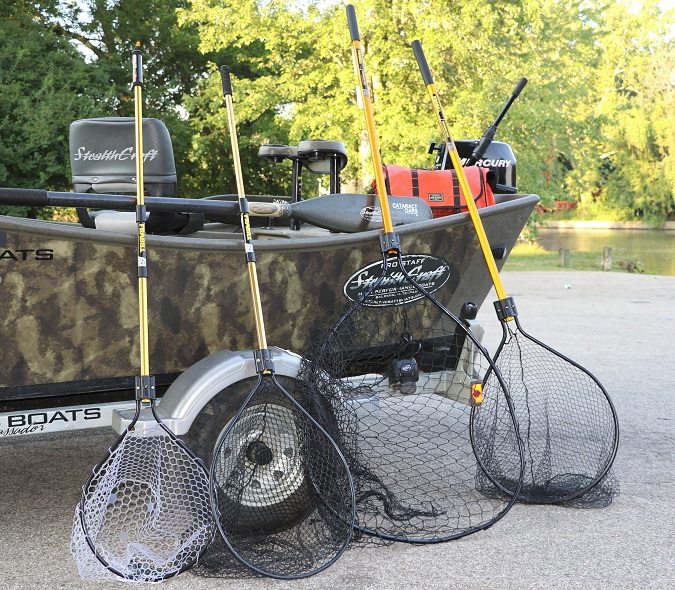
Yes, selecting the perfect net requires some research, but the study is stress-free.
The chosen one
It’s easy to talk yourself out of a high-quality net when the price tag shows triple digits before the dot. While not breaking the bank is important for most of us, it’s the long run you need to be looking at. Generally, you’ll likely be spending more money by replacing lesser models regularly that have failed miserably.
Take a look at the best nets that fit your needs and then budget for them. Hoop size, net material, handle length and the quality of the components that hold it all together are of the utmost importance.
Generally speaking, hoop size and net depth are dictated by what species are targeted. While many anglers prefer smaller nets because they are less cumbersome, a good rule of thumb is to go bigger than you think you will need. It’s also important to take into account other species you may encounter while fishing. If you mostly pursue bass and walleye, for example, but occasionally run into large northern pike, a net with a deeper bag and larger hoop that can accommodate longer fish is a great choice.
While many fishermen prefer smaller nets because they are less cumbersome – a good rule of thumb is to go bigger rather than smaller. It’s no surprise that big fish fit into larger nets much easier, but an added benefit of a larger net bag is smaller fish tend to be calm when they are comfortable in a roomy net. This is especially true when the net bag is lowered into the water which permits fish to revive without being handled. Many catch and release anglers and guides use a net with a tangle-free bag deep enough to allow fish to remain in the water. Fish can easily be unhooked and then released by allowing them to swim freely from the open net. Or, if you’re taking a few photos, the fish can be quickly lifted from the net, refreshed and ready for a quick release.
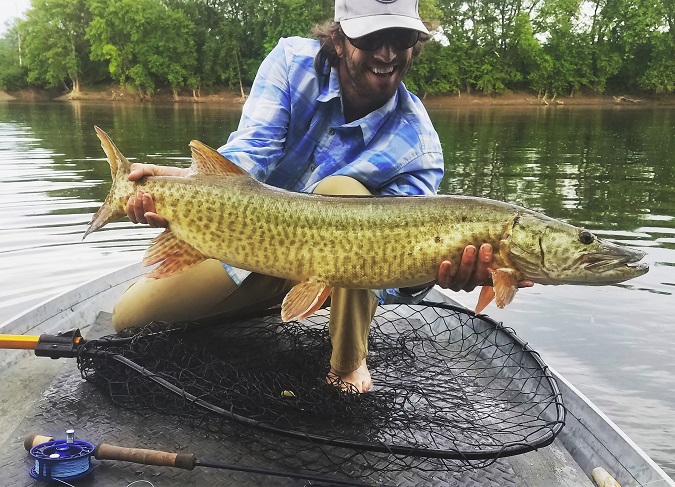
The Spin
The character of the fish you catch is another consideration as some species can be troublesome. If you’ve ever dealt with a huge king salmon sporting a mouth full of treble hooks while it flops wildly on the deck of a crowded boat, you know how much of a problem this can be. This holds true for pike and muskie anglers, as well as saltwater anglers who regularly deal with ornery species that are notorious for twisting and spinning after being netted. Not only can this potentially injure a fish that was intended to be released, there is usually significant tangling of hooks into the netting and possible impalement to the person performing the removal.
Guiding light
Like many guides, a high-performance net is a must for Wisconsin captain and guide Pat Kalmerton. The Lake Michigan and inland lake veteran’s favorite nets by far are Frabill’s line of Conservation Series Nets.
“The Conservation Series features a flat, linear bottom, which supports the weight of the fish and prevents them from rolling,” he states. “The rubber-coated netting is easy on the fish and it’s much easier to remove hooks from. These nets definitely make my job easier. Frankly, I can’t imagine using anything else.
“Also, the Pow’R Lok yoke on the Frabill Conservation Series is lightweight, yet, heavy duty – they are incredibly reliable,” Kalmerton added. “The handle design is nifty too. Round net handles can be difficult to hang on to with cold or wet hands. Frabill solved that problem by using an ergonomic heavy-duty aluminum handle that has grooves along the length of it that keep water off your hands so you can maintain a better grip. And trust me, if you’re lifting big fish out of the water non-stop during a hot bite, you need all the help you can get.”
If small spaces are a consideration, nets that have ability to collapse are much easier to fit in the busy confines of a fishing boat. The handles of the Frabill Power Stow Net line not only contract, but the hoop can be folded up. This is especially advantageous and certainly worth every penny when fishing from smaller boats.
On the other hand, some net models, such as the Frabill Conservation Series mentioned earlier, also offer telescoping handles, which provides increased range while netting fish. This is particularly important for anglers fishing from larger boats or an elevated position such as a break-wall or jetty. The longer handle is a huge asset when attempting to land large-bodied, speedy species such as salmon and steelhead, or any fish of trophy proportions that represent a greater challenge during the netting process.
Shore and wading anglers who regularly fish solo, conversely, may want to stick with nets that have shorter handles, which makes it easier to land fish by yourself.
Got the scoop?
The bottom-line is, choose your net wisely. Look for ones that feature the best design and reliable materials, as well the perfect combination of size and features that will most-assuredly improve landing success rates. A net that’s properly matched to the size of fish is especially valuable.
They may cost a bit more, but they are definitely worth the investment.
The post Get Your Net’s Worth appeared first on ODU Magazine-North America’s #1 Digital Fishing Magazine.

